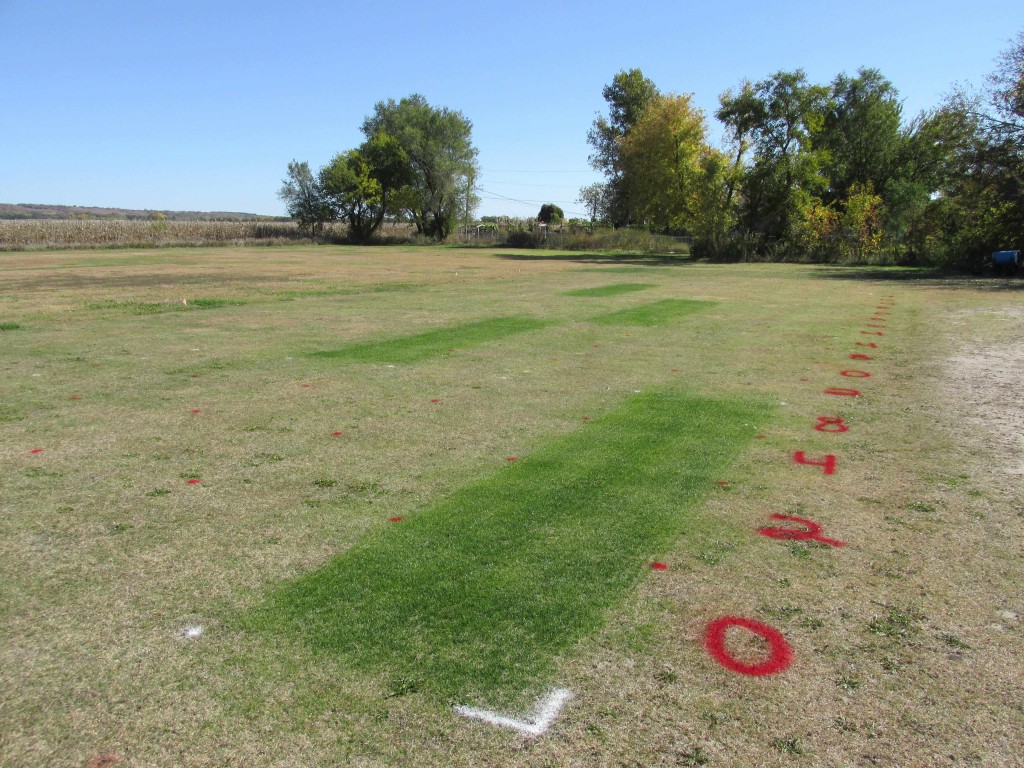(By Jared Hoyle and Evan Alderman, KSU Turfgrass Research and Extension)
As I was driving down the road the other day (as I do all the time) I was thinking (that can be trouble), “How can we conserve water in our managed turfgrass systems?” What is going to happen if regulations are passed and they cut water off for turfgrass applications? But, in all honestly it is not “if the water gets cut off” it is “when is the water getting cut off”?
This is one of the many reasons we have been researching the use of buffalograss. Buffalograss is a low (NOT NO) input turfgrass, including water. There is a lot that is unknown about buffalograss and how it can be used. Not to mention many new cultivars of buffalgorass are being developed for darker green color and longer color retention but much of the past research has been conducted on older cultivars. Also, many of the recommendations for buffalograss management were all based on the older cultivars of buffalograss.
Some might think the research season for buffalograss is winding down but it is not. There is still plenty of research to be done and many questions to be answered. This fall, KSU Turfgrass Graduate Student, Evan Alderman, is going to conduct research on dormant buffalograss. Objectives of his research are to investigate the longevity of turf colorants when subjected to simulated golf cart traffic, explore the effects of turf colorants on buffalograss at fairway height, and to evaluate the effects of simulated golf cart traffic on dormant buffalograss.

Treatments will involve three different turf colorants, as well as a more traditional Perennial Ryegrass overseeded treatment. Turf colorants will be applied when there is approximately 15-20% canopy color left in the buffalograss. Treatments will be replicated four times and will be subjected to simulated golf cart traffic. Traffic treatments will be applied once a week with plots receiving 0, 2, 4, or 8 passes per week. The study will run throughout the late fall, winter, and spring months.
We should get some interesting results. Ultimately, we hope to find out if we are able to maintain an aesthetically pleasing healthy turfgrass all while maintaining a quality-playing surface for golfers.
Don’t forget to follow me on twitter @KSUTurf
Also, visit our facebook page www.facebook.com/KSUTurf

